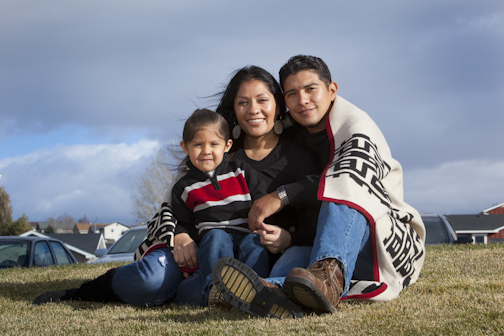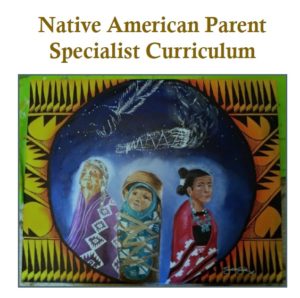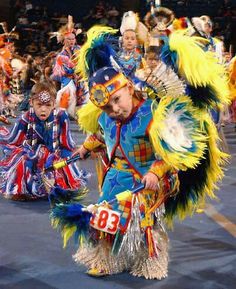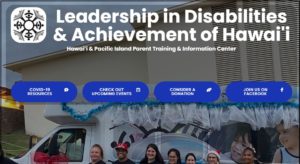INformation Hub
Welcome to the Native American Resource Collection
Welcome to the Native American Resource Collection
September 2020
 The Center for Parent Information and Resources is honored to host the library of products developed by the Native American Parent Technical Assistance Center (NAPTAC) and the many resources being developed and added by the Leadership in Disabilities and Achievement of Hawaii (LDAH).
The Center for Parent Information and Resources is honored to host the library of products developed by the Native American Parent Technical Assistance Center (NAPTAC) and the many resources being developed and added by the Leadership in Disabilities and Achievement of Hawaii (LDAH).
__________
Read NAPTAC’s story | NAPTAC’s materials were created expressly for Parent Centers, to inform the services they offer to American Indian and Alaska Native (AI/AN) families with children who have disabilities. Materials include briefing papers, infographics, PowerPoint presentations, and webinars.
Read how LDAH became actively involved | LDAH’s additions to the library ensure that the Native American Resource Collection also includes materials specific to Native Hawaiian communities.
Read how the term “Native Americans” is defined (Keep scrolling) | Important to know!
Read how the library is organized and access the collection | We’ll give you a hint… it’s organized in learning tiers. But what’s in each tier?
Looking for a specific resource? | Visit the collection’s Table of Contents page.
Back to top
__________________
Defining the Term “Native American”
When you hear the term Native American, what group or groups of people does that term include? Alaska Natives? American Indians? Native Hawaiians? All indigenous peoples who had long been living on the land that explorers “discovered” and claimed as their own? Does the term also include people who were born in the United States? Some combination thereof?
Because you’ll find the term Native Americans used often in this resource collection, it’s important to define what we mean and to which people or peoples the term refers.
Before 1974, the terminology that referred to the indigenous peoples of the continental United States was American Indian and Alaska Native. In 1974, the Native American Programs Act was passed (42 U.S.C. 2991 et seq.), establishing the Administration for Native Americans grant program within the U. S. Department of Health and Human Services. For the first time Native Hawaiians were included as eligible applicants. Since then, Native Hawaiians have been included in various, but not all, pieces of federal legislation aimed at providing federal assistance to the indigenous peoples of the U.S. Now, the term Native American typically refers to American Indians, Alaska Natives, and Native Hawaiians.
With one exception worth noting: The U.S. Census Bureau continues to define “Native Americans” as American Indians and Alaska Natives only. Native Hawaiians, Samoans, and Chamorros (the indigenous people of Guam) are included in the Census grouping of “Native Hawaiian and other Pacific Islander.”
Given the above discussion, in the Native American Resource Collection the term Native American refers exclusively to the federally defined, original indigenous peoples of the United States: American Indians, Alaska Natives and Native Hawaiians.

Access the Native American Resource Collection
The Native American Resource Collection includes many useful products in print and video format. The resources are designed to support new and current staff in their ongoing training and development. Each product contains current information about the traditional culture and contemporary issues important to Native families, written from the unique perspective of American Indians, Alaska Natives, and/or Native Hawaiians.
We’ve organized the collection into 4 “tiers of learning” that reflect what we know about journeys of multicultural growth. You can either follow this learning path, or make selections from the library based on your prior knowledge and personal interest.
Tier 1: Native Culture and Background
The first step to expanding outreach and service delivery to Native parents is to learn about their culture, to learn what values are important to them, and to understand how the history between Native and non-Native cultures in America has shaped how we relate to each other. The materials in Tier 1 will introduce you to the foundations upon which Native communities today are built.
Tier 2: Outreach to Native Communities
After Tier 1’s introduction to Native culture and history, the next step on the learning path is to know more about culturally appropriate outreach practices. What’s the best way to introduce your Parent Center to parents in rural areas, as well as to those families living in urban areas? Are there specific cultural protocols that Parent Centers should know—what to do or say, what not to? Where might Parent Centers meet Native parents of children and youth with special needs? What organizations or federal programs can help? The resources in Tier 2 respond to these questions and provide specific suggestions.
Tier 3: Native Children and Youth
The U.S. Department of Education highlighted the need for Parent Centers to address the unique needs of youth with special needs. Tier 3 houses the print and video materials developed to address this special segment of the Native American population. The materials focus on the different perspective that Native families hold about transition planning, how the current education system impacts Native youth with special needs, how parents can address the bullying of their special needs youth, and how learning about resilience can help the youthful population.
Tier 4: Resources and Additional Information
The trainings and briefs that NAPTAC and LDAH have created for Parent Centers include specific worksheets, group activities, and resource lists, all of which are designed to strengthen Parent Center outreach to and interactions with Native parents of children and youth with special needs. Tier 4 brings these materials together in one place and includes contact lists and national organizations that represent the indigenous peoples of the United States–American Indians, Alaska Natives, and Native Hawaiians. Because the Native American collection will continue to evolve over time as CPIR updates existing products and shares new information relevant to Parent Centers working with Native communities, we’ll be adding items of note to Tier 4 as they become available.
NAPTAC’s Story
Out of the Indian approach to life there came a great freedom,
an intense and absorbing respect for life, enriching faith in
a Supreme Power, and principles of truth, honesty, generosity,
equity, and brotherhood as a guide to relations.
~Black Elk, Oglala Lakota Sioux
Mission and Funding | The Native American Parent Technical Assistance Center (NAPTAC) was a federally funded national technical assistance center charged with providing technical assistance to the 90+ Parent Centers across the United States. It was funded by the Office of Special Education and Rehabilitation Services at the U.S. Department of Education.
Capacity-Building Products | To assist Parent Centers, NAPTAC hired Native experts in the field of Indian education to produce high-quality, research-based, culture-based briefing papers and other print materials, and to host educational webinars designed to build the capacity of Parent Centers to increase their outreach and culturally appropriate service delivery to underserved Native American families in their service area.
 Intensive Training | While continuing to produce briefs, infographics, and webinars for the entire Parent Center network, NAPTAC developed a one-of-a-kind training program to expand the capacity of Parent Centers to provide culturally sensitive outreach and services to Native families whose children have disabilities. Using a research–based model, which has cultural immersion as its foundation, NAPTAC created the Native American Parent Specialist (NAPS) training program for six Parent Centers based in states with the highest Native American populations. The team designed trainer materials, a participant training notebook, and a CD containing all participant materials. Across the next 7 months, the Parent Center trainees took part in three intensive, 3–day training sessions held in different states between July 2017 and January 2018. The program also included cultural excursions to Native community events.
Intensive Training | While continuing to produce briefs, infographics, and webinars for the entire Parent Center network, NAPTAC developed a one-of-a-kind training program to expand the capacity of Parent Centers to provide culturally sensitive outreach and services to Native families whose children have disabilities. Using a research–based model, which has cultural immersion as its foundation, NAPTAC created the Native American Parent Specialist (NAPS) training program for six Parent Centers based in states with the highest Native American populations. The team designed trainer materials, a participant training notebook, and a CD containing all participant materials. Across the next 7 months, the Parent Center trainees took part in three intensive, 3–day training sessions held in different states between July 2017 and January 2018. The program also included cultural excursions to Native community events.
Evaluating the Training Program |The pre-and-post training readiness surveys, training evaluations, and correspondence clearly indicated that each cohort member improved his or her knowledge, skills, and attitudes about how to work with Native American families. Evaluation results also made it clear that the intensive, often highly emotional training reaffirmed the cohort members’ dedication to this underserved client population.
“This training has been a life changing event for me.”
~Cohort member’s evaluation, Denver, July, 2017.
When NAPTAC staff and consultants planned, envisioned, and conducted the NAPS pilot training, they never imagined the positive changes it would bring to all the participants and to the trainers themselves. It truly was “life changing.” Strong partnerships were forged and continue to this day, as does the program graduates’ passion to serve Native American families of children with disabilities. NAPTAC staff and trainers feel honored to still get emails and updates on the impact each graduate is making in Native American communities. Their passion has also changed their priorities in their work places.
Repeating the Success | The U.S. Department of Education learned of the successful pilot training from Parent Center personnel and other field staff. Soon after, NAPTAC was urged to train a second cohort of Native American Parent Specialists in the final year of the grant. This second group included Parent Center trainers and directors from programs in 6 more states with high populations of Native Americans. They attended three separate intensive, 3-day trainings in three different states between May and September 2018. As before, the training also included cultural excursions to Native community events.
The pre-and post-training surveys and evaluations of Cohort 2 members showed equally positive results in terms of increasing trainees’ knowledge of how to conduct active and effective outreach to Native American parents of children with special needs. As with the first cohort, evaluation results also confirmed that Cohort 2 members were committed to doing so.
 “None of us will be able to walk away from this experience without feeling gratitude for being chosen to be a part of this experience. Thank you.”
“None of us will be able to walk away from this experience without feeling gratitude for being chosen to be a part of this experience. Thank you.”
~Cohort 2 member’s evaluation.
Once again, the deep impact that this new training program had on the participants exceeded NAPTAC’s vision and goals, emotionally touching all involved. Members of Cohort 2 also continue to send NAPTAC staff and trainers emails and updates on their expanded outreach efforts to Native families in their service area and beyond. In addition, members of both training cohorts have reached across their states and regions to present at conferences and other educational events, sharing their rich experiences of working with Native American families and communities.
And Now? | The NAPTAC grant ended on September 30, 2018. As a result of the grant, select Parent Centers now have greater capacity to reach out to Native families within their service area and the cultural knowledge and skills to work with these underserved families and build lasting trusting relationships within Native communities. Parent Centers have this responsibility.
CPIR is honored, truly honored, to partner with NAPTAC and LDAH staff now to ensure that the project’s unique Native–authored print materials and webinars continue to be available to Parent Centers, the Regional Parent Technical Assistance Centers, and others committed to reaching out to and assisting Native families with children and youth with special needs.
How LDAH Became Actively Involved
When the Native American Resource Collection first became available here at CPIR, we held a webinar to take Parent Centers on a tour of its contents. The former NAPTAC authors and staff described the intention, organization, and value of the materials in the library. In the course of that webinar, an astute listener asked, “Does the collection include materials about Native Hawaiians, too?” 
And so was born LDAH’s involvement. LDAH is the acronym of the Leadership of Disabilities and Achievement of Hawai’i. LDAH is the PTI that serves all 7 islands of the state of Hawai’i. Who better to speak to the customs, beliefs, and ways of life of Native Hawaiians?! In addition, LDAH serves the U.S.-affiliated Pacific jurisdictions of the Commonwealth of the Northern Mariana Islands, the two Territories of American Samoa and Guam, as well as the Freely Associated States of the Republic of the Marshall Islands, the Republic of Palau and the Federated States of Micronesia.
Thank you, LDAH, for contributing these locally authored resource materials, thereby enriching this resource collection and all of us.
Which part of the resource collection would you like to visit now?
Native American Resource Collection’s landing page (You’re here now.)
Tier 1: Native Culture and Background
Tier 2: Outreach to Native Communities
SOURCE ARTICLE: Center for Parent Information and Resources
Give us a call at (727) 523-1130 or (800) 825-5736 or request a callback by clicking below.
